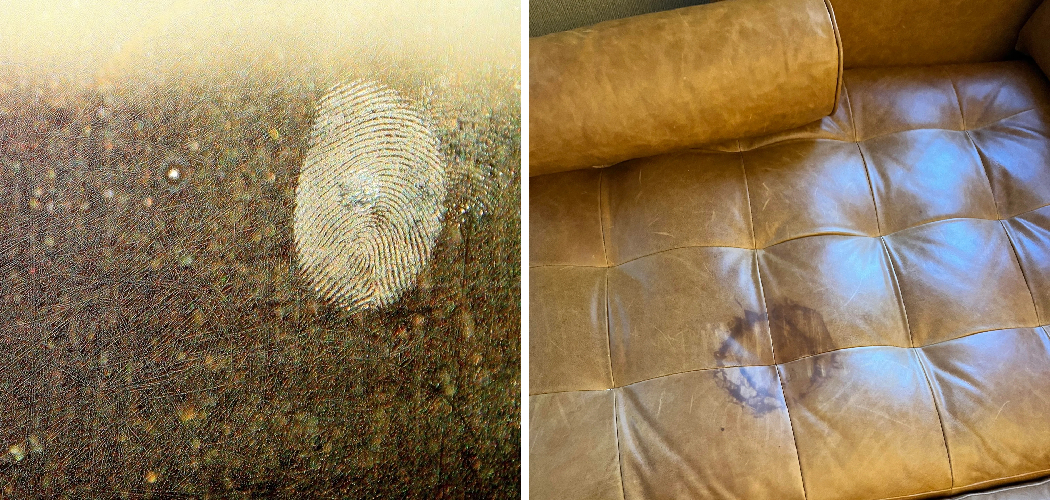Are you tired of looking at that greasy spot on your favorite piece of furniture? Grease stains can be a nightmare to remove, but with the right tools and techniques, you can get that spot looking like new again. In this guide, we’ll go over some effective methods on how to get grease out of furniture.
Grease stains on furniture can be a challenging issue, but they are not impossible to tackle. Whether it’s a spill from a cooking mishap or an accidental smear from greasy hands, addressing the stain promptly can prevent it from becoming a permanent blemish.
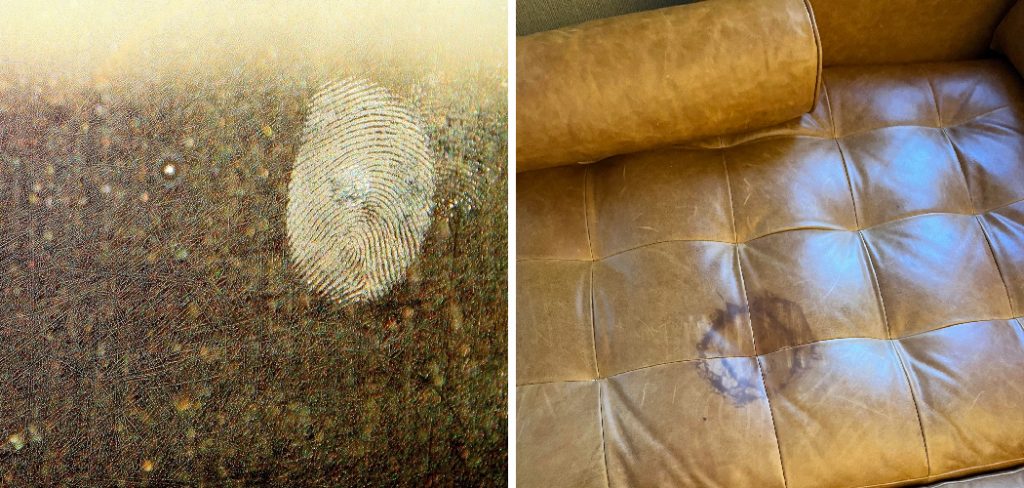
This guide will introduce you to effective techniques and products for restoring your furniture to its original condition. With the right approach and a bit of patience, you can successfully remove grease stains from various types of upholstery and maintain the pristine look of your furniture.
What Will You Need?
Before diving into the methods, it’s essential to gather the necessary tools and supplies to effectively remove grease from your furniture. Here are some common items that you may need:
- Clean cloth or paper towels
- Baking soda
- Dish soap or laundry detergent
- White vinegar
- Rubbing alcohol
- Cornstarch
- Club soda
- Soft-bristled brush
- Vacuum cleaner
- Dry cleaning solvent (for delicate fabrics)
Make sure to have these items on hand before starting the stain removal process. It’s also a good idea to test the solution on an inconspicuous area of the furniture first to ensure it doesn’t cause any damage.
10 Easy Steps on How to Get Grease Out of Furniture
Step 1. Blot the Excess Grease
Using a clean cloth or paper towels, gently blot the excess grease from the surface of the furniture. Avoid rubbing, as this could spread the stain and embed the grease deeper into the fabric. Simply press and lift to absorb as much grease as possible.
Step 2. Apply Baking Soda or Cornstarch
Sprinkle a generous amount of baking soda or cornstarch directly onto the grease stain. These powders are great for absorbing grease. Allow it to sit on the stain for at least 15-30 minutes, giving it enough time to draw out the oil.
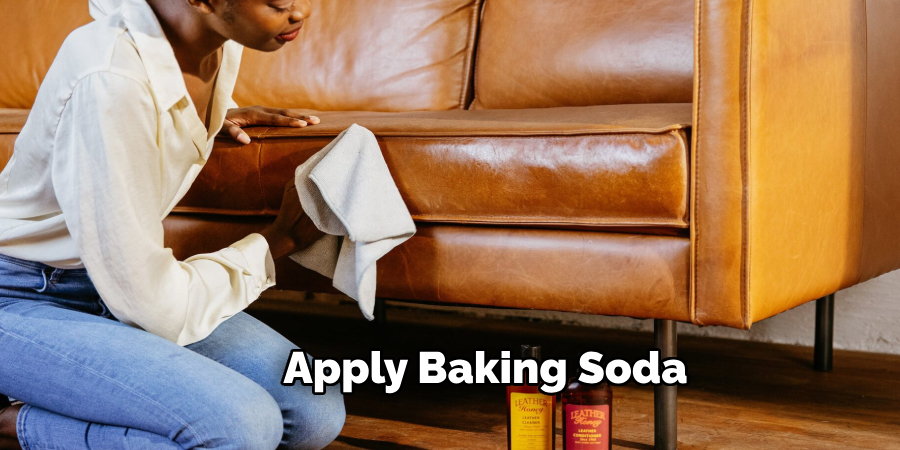
Step 3. Vacuum the Powder
After allowing the baking soda or cornstarch to sit for the recommended time, use a vacuum cleaner to gently remove the powder. If available, make sure to use the upholstery attachment, as it is designed to clean fabric surfaces without causing damage. The vacuum will lift the absorbed grease along with the powder, leaving the surface cleaner and ready for the next treatment step.
Step 4. Apply Dish Soap or Laundry Detergent
Mix a small amount of dish soap or laundry detergent with warm water to create a soapy solution. Dip a clean cloth or sponge into the solution and gently dab it onto the grease stain. Work from the outside of the stain towards the center to avoid spreading the grease further. Let the soapy solution sit on the stain for about 5-10 minutes to break down the grease particles.
Step 5. Rinse with Warm Water
After allowing the soapy solution to sit for the recommended 5-10 minutes, it’s time to rinse the area. Take a clean cloth or sponge and dampen it with warm water. Gently blot the stained area to remove the soap along with the loosened grease particles. Be careful not to saturate the fabric, as this could potentially damage it or make it more difficult to dry. Blot until most of the soap has been removed, and you can no longer see suds on the cloth.
Step 6. Apply White Vinegar Solution
If any grease residue remains, a white vinegar solution can be an effective next step. Mix equal parts white vinegar and warm water in a bowl. Dip a clean cloth into the solution and gently dab it onto the stain. The acidic nature of vinegar helps to break down grease. Let it sit for about 5 minutes, ensuring it has time to work on the stain without over-saturating the fabric.
Step 7. Blot with Rubbing Alcohol
For particularly stubborn grease stains, rubbing alcohol can be a powerful ally. Lightly dampen a cloth with rubbing alcohol and gently blot the stain. Rubbing alcohol evaporates quickly, making it less likely to oversaturate the fabric. Blotting will help lift any remaining grease particles without spreading the stain further.
Step 8. Rinse and Blot Dry
Rinse the area again with a cloth dampened in warm water to ensure all cleaning agents are removed. Blot the area thoroughly to remove excess moisture. For delicate fabrics, avoid vigorous rubbing and instead, use a gentle pressing motion.
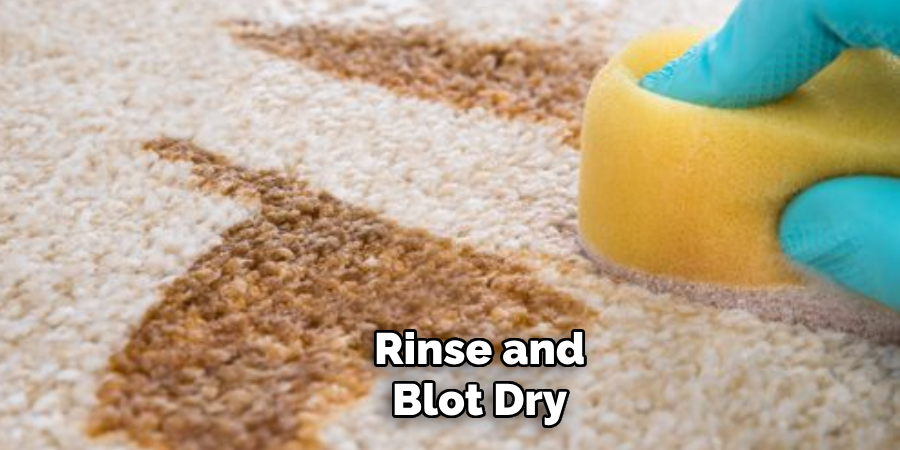
Step 9. Use a Soft-Bristled Brush (If Necessary)
In cases where the grease stain has penetrated deeply into the fibers, using a soft-bristled brush can aid in working the cleaning solution deeper into the fabric. Choose a brush with soft, gentle bristles to avoid damaging the upholstery. Apply a bit more of the cleaning solution used in previous steps and gently brush the stain in a circular motion. This helps to agitate the fibers and lift out embedded grease. Brush lightly to prevent fraying or damaging the fabric.
Step 10. Allow to Air Dry
Once you have thoroughly rinsed the area to remove all cleaning agents and blotted it dry, the final step is to allow the furniture to air dry completely. Ensure good ventilation in the room to speed up the drying process. Avoid using direct heat sources like hairdryers, as excessive heat can damage the fabric or cause shrinkage. Placing a fan nearby can help circulate air and expedite drying.
Follow these steps and use the right tools and cleaning agents to effectively remove grease stains from your furniture.
5 Additional Tips and Tricks
- Cornstarch: Sprinkle cornstarch over the grease stain and let it sit for 15-20 minutes. These powders absorb the grease effectively. Afterward, vacuum up the residue and clean the area with a damp cloth.
- Use WD-40: Surprisingly, WD-40 can also be effective in removing greasy stains from clothes or fabric. Spray a small amount onto the stain, let it sit for a few minutes, and then wash as normal.
- Chalk: Another surprising household item that can help with greasy stains is chalk. Simply rub white chalk over the stain before laundering to absorb the grease.
- Rubbing Alcohol: Dab a small amount of rubbing alcohol onto a cloth and blot the grease stain. Alcohol acts as a solvent to break down the grease. Be sure to test this method on an inconspicuous area first to ensure it doesn’t damage the fabric.
- Commercial Upholstery Cleaner: For tough or persistent stains, a commercial upholstery cleaner specifically designed for grease removal can be effective. Follow the manufacturer’s instructions for best results and test in a hidden area before full application.
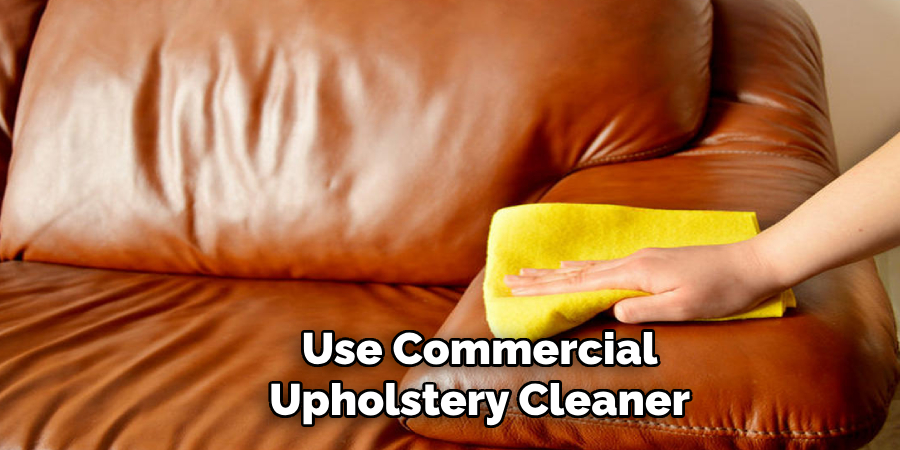
With these additional tips and tricks, you now have a variety of methods to choose from when trying to remove grease stains. Whether it’s on your clothes, furniture, or carpet, these solutions can help save your items from permanent damage.
5 Things You Should Avoid
- Using Bleach: Avoid using bleach on grease stains, especially on colored or patterned fabrics. Bleach can discolor and weaken the fibers, causing permanent damage to your furniture.
- Excessive Scrubbing: Vigorous scrubbing can spread the grease stain, push it deeper into the fabric, or damage the material. Always blot gently to remove as much grease as possible without causing further harm.
- Ignoring Manufacturer Instructions: Always refer to and follow the care instructions provided by the furniture manufacturer. Using incorrect cleaning methods or products can void warranties and ruin the furniture.
- Applying Heat Directly: Avoid using hot water or direct heat such as a hairdryer when treating grease stains. Heat can set the stain, making it much harder to remove.
- Using Harsh Chemicals: Harsh chemicals such as acetone or ammonia can damage or discolor your furniture fabric. Stick to milder cleaning agents and always test them on inconspicuous areas first.
By avoiding these common mistakes, you can prevent further damage to your furniture and ensure the best chances of successfully removing grease stains.
What are the Causes of Grease Stains?
Grease stains can occur for a variety of reasons, including:
- Cooking and Food: Splatters or spills of cooking oil, butter, or other greasy foods can leave stains on your clothes or furniture.
- Mechanical Issues: Grease from machinery, vehicles, and tools can transfer onto clothing or upholstery during use, leading to stubborn stains.
- Accidents: Accidental spills of oily substances such as motor oil, grease, or salad dressings can leave unsightly stains.
- Body Oils: Natural oils from our skin and hair can transfer onto furniture over time, leaving a greasy residue that attracts dirt and can be challenging to remove.
- Pets: Our furry friends can also contribute to grease stains with their natural oils or by tracking grease into the house on their paws.
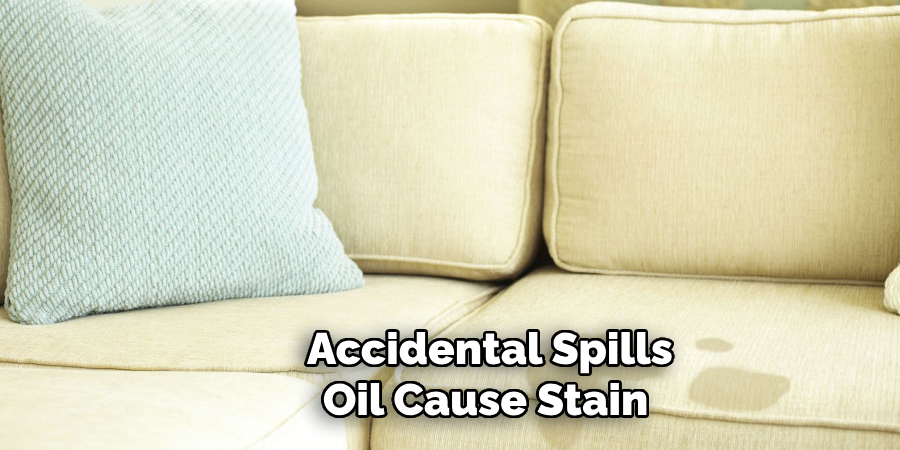
By understanding the various causes of grease stains, you can take preventative measures to avoid them and be better prepared to tackle any stains that do occur. Remember to always act quickly when dealing with grease stains, as they become more difficult to remove over time.
Conclusion
In conclusion, effectively tackling grease stains on furniture requires prompt action, the right tools, and adequate knowledge of what to do and what to avoid. Utilizing household items like cornstarch, WD-40, chalk, or rubbing alcohol can offer quick and accessible solutions for grease stains. Commercial upholstery cleaners specifically designed for grease can be a reliable alternative if these methods fail.
However, it is equally important to stay away from practices that could worsen the problem, such as using bleach, applying excessive scrubbing or heat, and ignoring manufacturer instructions.
By following these guidelines and choosing the appropriate removal techniques on how to get grease out of furniture, you can maintain your furniture’s appearance and prolong its lifespan, protecting your investment from the frustrating impact of grease stains.
